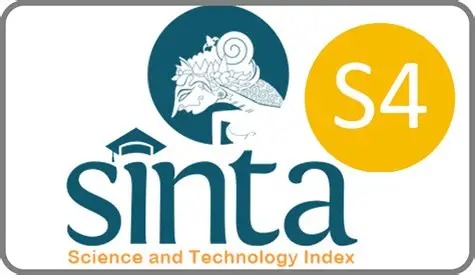Productivity Analysis in the Production Process Using the Six Sigma Method (Case Study at the XSMK Company)
DOI:
https://doi.org/10.14421/jiehis.3783Keywords:
waste, six sigma, DPMO, rejectAbstract
XSMK company is a company engaged in the furniture sector that produces various kinds of shelving products in Indonesia. There are problems that hinder the productivity of the company, namely waste in the production process. Six Sigma is an organized and systematic method for process improvement strategy and new product development that relies on statistical methods and scientific methods to create reductions in product defect rates. With the Six Sigma method, the company implements a vision of quality improvement towards the target of 3.4 failures per million opportunities DPMO (Defects Per Million Opportunities). For this reason, a study was conducted which aimed to determine the value of six sigma, the causes of product rejects, as well as suggestions for improvements to the company. From the results of data processing, the company has an average sigma level of 4,336 with a possible damage of 5,867.5 units for one million productions. There are 4 out of 11 processes that cause rejected products, namely Pond, Bending Plate, Spot, Welding. The main cause of Reject is plate Bending with the percentage of total Reject being 48.077%. From the problems that occur, actions can be taken to minimize Reject products in the production process at the company in the form of making improvements to the Pond Process, Plate Bending Process, Spot Process, Welding Process, Machines, Workers, Raw Materials, and Systems that exist in the company.
References
Assauri, S. (1998). Manajemen Operasi dan Produksi. Jakarta: LPFE UI
Behara, R.S. (1995). Customer Satisfaction Measurement and Analysis Using Six Sigma. International Journal of Quality and Reliability Management, Vol. 12, No.3, page 9- 18.
Eshan S.J. (2012). A Case Study on Quality Function Deployment (QFD). Journal of Mechanical and Civil Engineering, Volume 3, Issue 6 (Nov-Dec. 2012), PP 27-35
Six Sigma Untuk Organisasi Bisnis dan Pemeritah. Jakarta: Gramedia Pustaka Utama.
Heizer, Jay and Render, B. (2006). Manajemen Operasi. Jakarta: Salemba Empat.
Kunal Ganguly. (2012). Improvement Process for Rolling Millthrough the DMAC Six Sigma Approach. International Journal for Quality Research.
Ohno, T. (1988). Toyota Production System: Beyond Large Scale Production. Cambridge: Productivity Press.
Pande, Pete and Larry Holpp. (2002). What is Six Sigma. United States of America: McGraw- Hill
Pande, Peter. S., Robert P., Neuman & Roland R. Cavanagh. (2002). The Six Sigma Way. Andi, Yogyakarta.
Reksohadiprojo, Sukanto., Gitosudarmo, Indriyo. (2000). Manajemen Produksi. BPFE, Yogyakarta.
Susetyo J, Winami dan Hartanto C. (2011). Aplikasi Six Sigma dan Kaizen Sebagai Metode Pengendalian Dan Perbaikan Kualitas Produk. Jurnal Teknologi, Volume 4 Nomor I, Juni 2011, 61-53.
Young H., and Frank T. (2006). Benefits, obstacles, and future of six sigma approach. Technovation, International Journal of Quality and Reliability Management, Vol. 26, No.4, pp. 708–715.
Downloads
Published
How to Cite
Issue
Section
License
Copyright (c) 2023 Elanjati Worldailmi

This work is licensed under a Creative Commons Attribution-ShareAlike 4.0 International License.
(c) The Author(s). This article is distributed under a Creative Commons Attribution-ShareAlike 4.0 International License.






